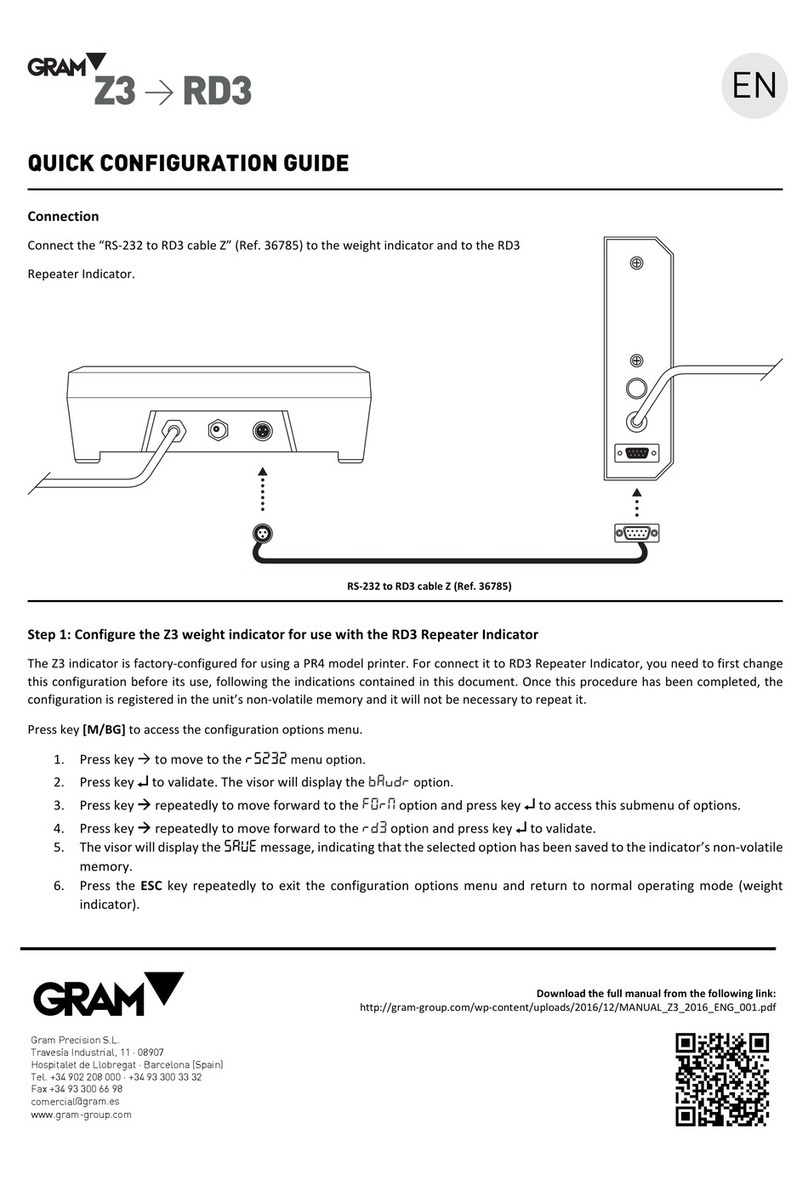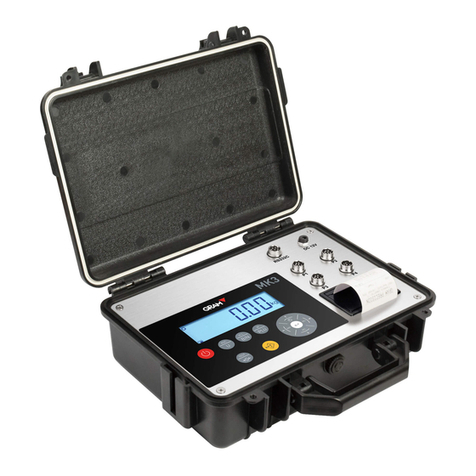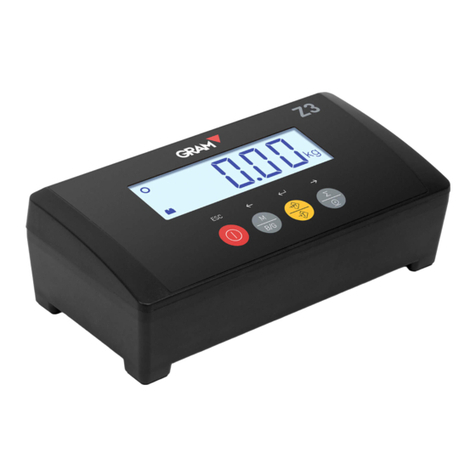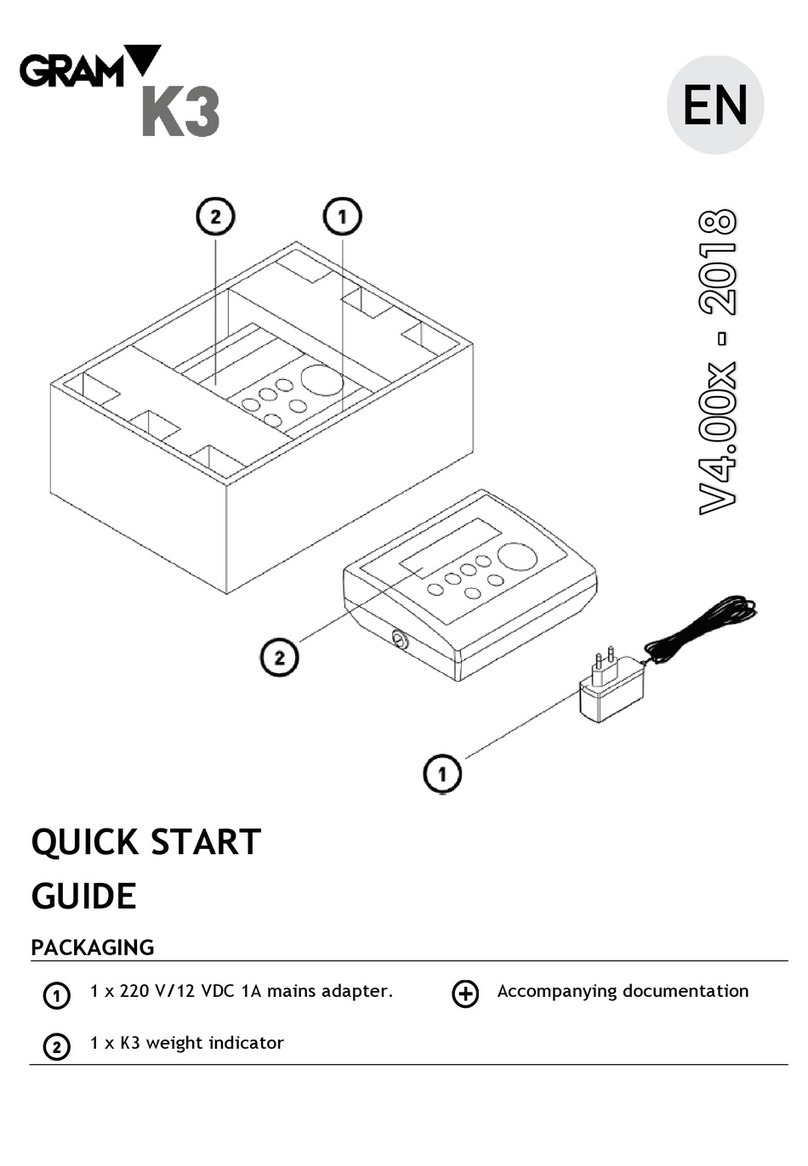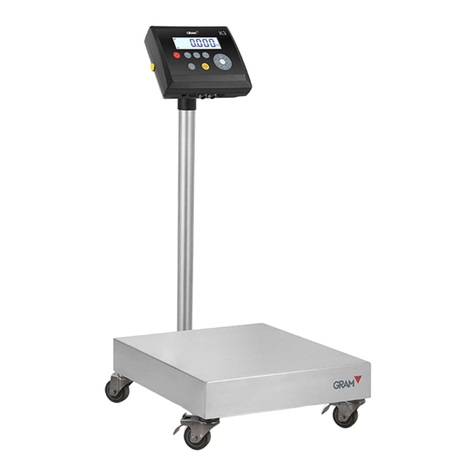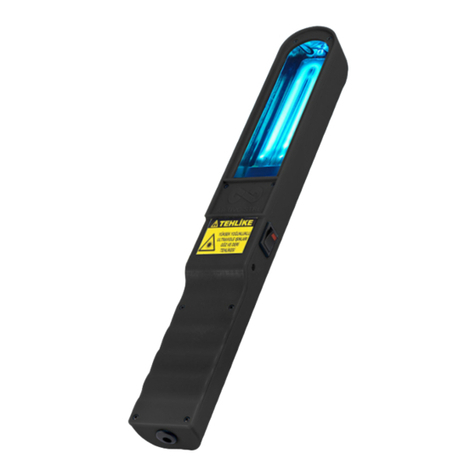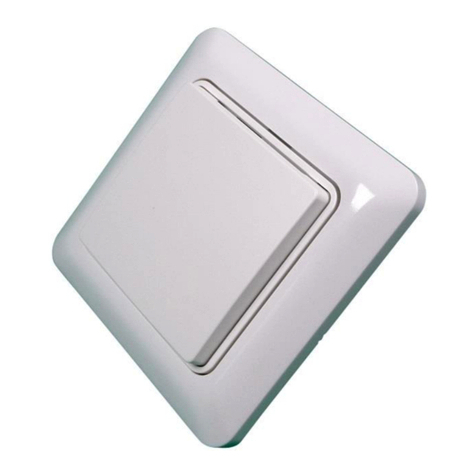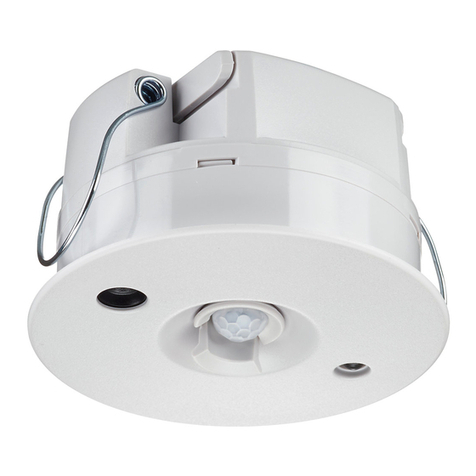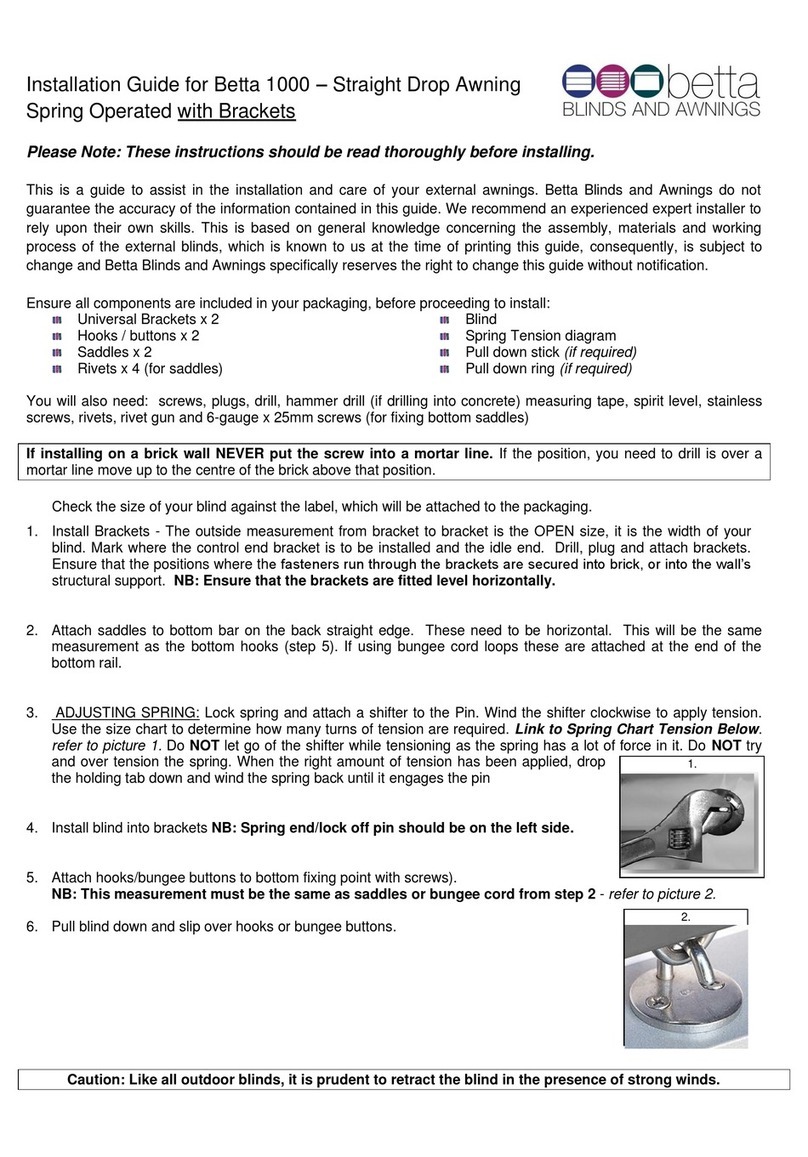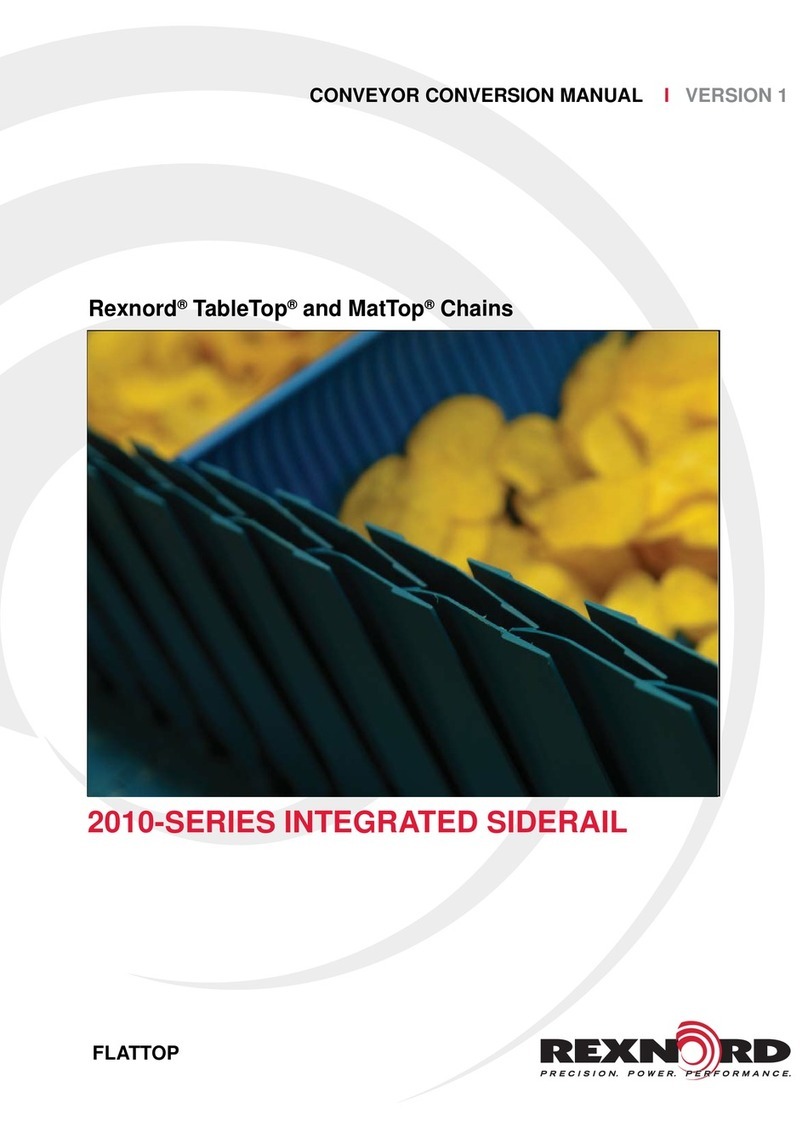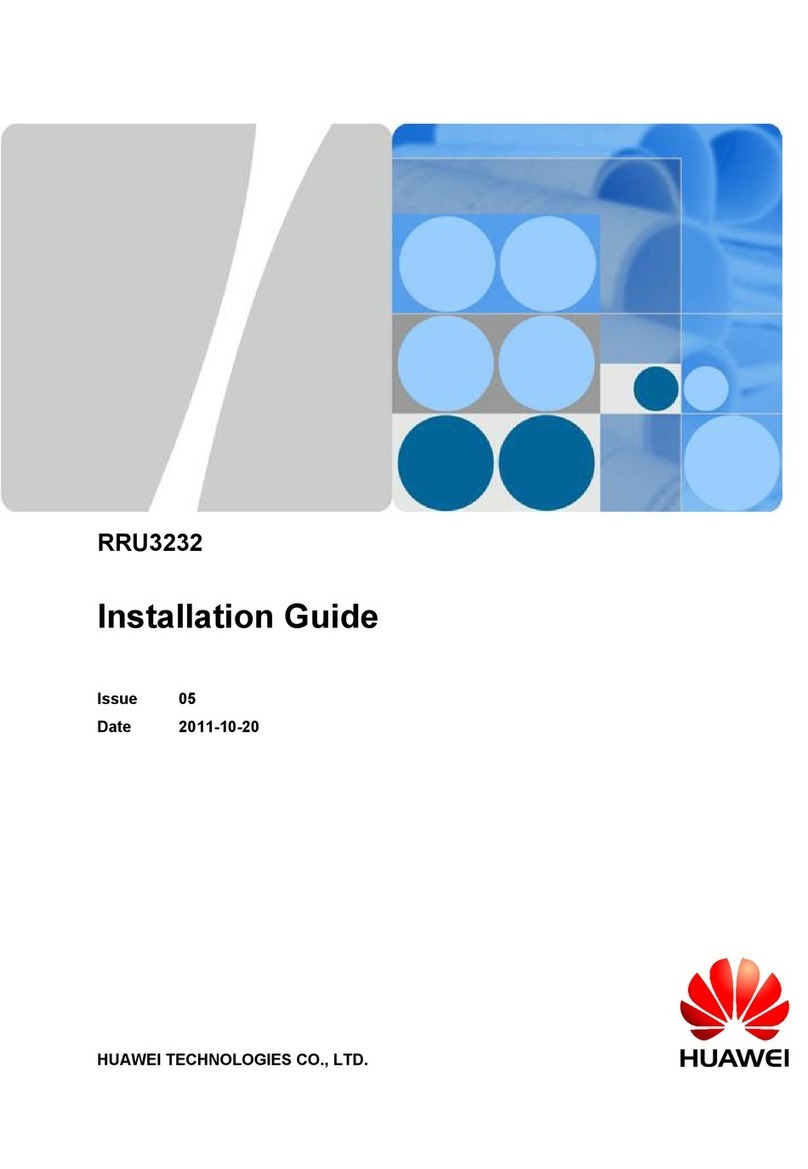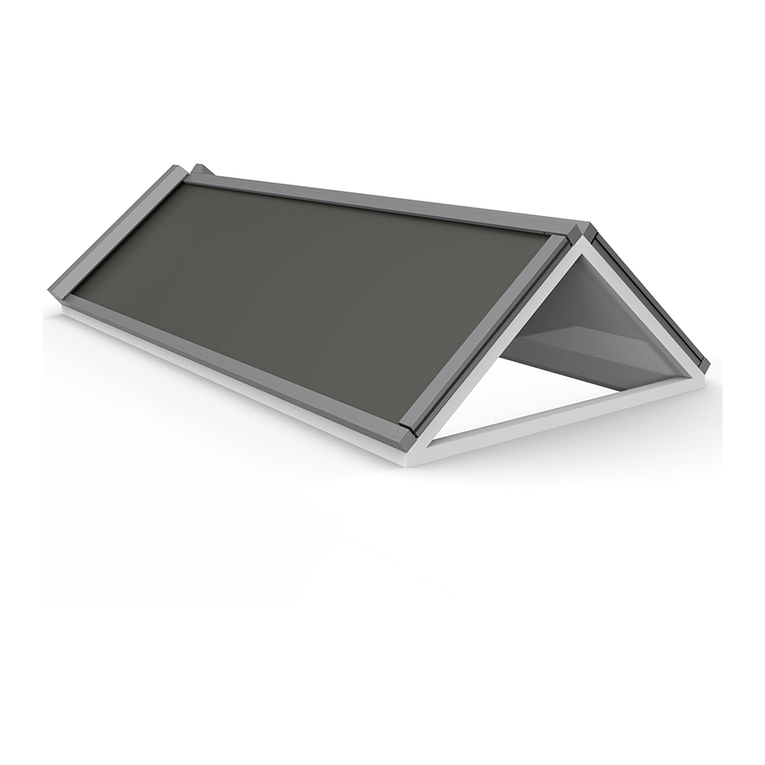Gram BULL User manual

1
EN
USER'S MANUAL
Weighing system
BULL

2

3
INDEX
1. GENERAL DESCRIPTION ............................................................................ 4
2. UNPACKING .............................................................................................. 5
3. INSTALLATION ........................................................................................... 6
4. CHARGING THE BATTERIES ....................................................................... 8
5. TURN ON ................................................................................................. 10
6. TURN OFF ................................................................................................ 12
7. LCD KEYBOARD AND DISPLAY ................................................................. 13
8. FUNCTIONING ......................................................................................... 16
8.1. TARE ............................................................................................ 16
8.2. MEMORY TARE RECORDING ....................................................... 16
8.3. RESETTING .................................................................................. 17
8.4. LCD DISPLAY TEST ....................................................................... 18
8.5. OVERLOAD ALARM ..................................................................... 18
9. CONFIGURATION OPTIONS MENU ......................................................... 19
9.1. BEEP ............................................................................................ 20
9.2. WiFi-X .......................................................................................... 20
9.3. TLU .............................................................................................. 20
9.4. HIGH (Overload alarm) ............................................................... 21
10. ERROR MESSAGES ................................................................................... 22
11. NOTES ..................................................................................................... 23

4
1. GENERAL DESCRIPTION
BULL is a weighing system for forklift trucks that integrates three
independent equipments connected to each other through a wireless
network:
Indicator:
When an object is lifted with the forks, the indicator shows the weight.
At rest, it indicates the battery level of the forks. It allows to operate
the weighing functions of the scale with a simple 11 mechanical keys
interface.
Forks:
Each fork is an independent scale that measures the weight of the load
it lifts. Each fork is equipped with a rechargeable battery with an
autonomy of up to 72 hours of continuous operation.
1
2
1
2

5
2. UNPACKING
BULL indicator and
documentation
SIndicator support
Fork 1
Fork 2
Battery chargers for
forks

6
3. INSTALLATION
Place the indicator holder in the intended housing at the rear of the unit:
Screw the indicator holder firmly onto one of the bars in
the forklift cabin in the position you feel is most
convenient. You will find M6 screws of two different
lengths, 40mm and 70mm, in the packaging.
Place the indicator in its place and use the sprocket on
the bracket to orient it as you wish.
Slide the bracket between the two
guides on the indicator box and push
until the safety stop engages.

7
Mount both forks on the fork lift truck holder by sliding them to the desired
distance from the fork lift truck. Once positioned, secure the fork with the
safety lock to prevent accidental movement.

8
4. CHARGING THE BATTERIES
Weight indicator:
The support battery inside the scale is not removable. To charge the battery,
connect the supplied 12Vdc AC/DC adapter to the scale and plug the adapter
into a 220V / 50Hz outlet.
When the power is on, the indicator shows the battery charge level on the LCD
display by means of a pictogram:
Battery operation. The power supply is not connected. The indicator's charge level is
indicated.
AC/DC power supply connected to the wall outlet.
It is not necessary to keep the indicator on for battery charging, charging
with the indicator off is recommended.

9
Charging the battery of the forks:
Open the battery compartment cover by loosening the two fastening screws.
Remove the rechargeable battery from each fork and connect it to either of
the two chargers provided. Plug the charger into a 220V/50Hz outlet.
It is convenient to recharge both batteries at the same time: The system will
automatically switch off when the battery with the lowest charge is exhausted.

10
5. TURN ON
Press and hold the button / light on the side of each fork until it lights up:
Turn on the weight indicator installed in the truck cabin by pressing the
indicator on/off button:

11
When you press the power key, the display lights up and goes through the
following sequence
1. On the LCD display all the segments and symbols light up for one
second to check that they are working correctly.
2. Then the version code of the equipment firmware is shown for
one second.
3. Finally, the maximum capacity and resolution of the scale are
displayed for one second.
While the indicator establishes the connection with the forks, the LCD display
shows "oooo ".
Once the connection with the forks is established, the display will indicate
the weight.
If no change in weight is detected, after 5" the display turns off and the
system goes to standby (low power) until a new load is detected in any of the
forks.
In idle condition, the LCD display indicates the remaining autonomy of the
equipment by means of a percentage:
B 100

12
6. TURN OFF
Press and hold the indicator on/off button for more than two seconds. The
indicator display will show “OFF” and then both the indicator and the two
forks will turn off.
The system will automatically turn off in any of the following circumstances:
• The battery voltage of any of the three units is below 5.7Vdc. In this
case, the message “bAt” will flash on the indicator display for a few
seconds, and then the whole system will automatically switch off. The
batteries need to be recharged.
• The forks will automatically turn off if after 3 minutes the indicator is
not lit or the connection cannot be established.

13
7. LCD KEYBOARD AND DISPLAY
Turn on/off the equipment. When pressed, it turns on the indicator.
When the indicator is on, pressing and holding it for two seconds
turns it off.
Escape. In menu mode, you have the function of menu exit and
return to normal mode.
Gross/Net. When the tare is used, pressing it displays the gross
weight (total weight on the scale), and pressing it again displays the
net weight. If you press and hold it for more than one second, you
access the overload alarm set point input.
M / PLU. Pressing it accesses the scale configuration menu.
Zero / Test. Zeroing the scale. When pressed for more than one
second, it shows the display test, software version, capacity and
division.

14
Tare When pressed, subtracts the weight of any container or box on
the platform until the weight is removed from the platform and this
key is pressed again.
M+ and right arrow. Selects the next stored tare. In menu mode, it
displays the next option.
MR and left arrow. Selects the previous stored tare. In menu mode,
returns to the previous option.
Enter. In menu mode, confirms the selection/modification made.
Clock and up arrow. Pressing it for more than one second displays
the date and time (optional RTC board). In menu mode, when editing
the content of a parameter, the value (digit) on the display increases.
MC and down arrow. In menu mode, when editing a parameter, it
decreases the value (digit) that appears on the display. If it is held
down for more than one second, the "Clear" function is executed: it
cancels the tare or resets a value when editing a tare register or the
set point for the overload alarm.

15
It shows the weight that the forks are lifting.
Stable weight indication: There is a weight on the scale and it does not change.
Flashing or off to indicate that there is movement on the scale.
Negative sign.
The indication may be negative if a tare is activated or a problem has occurred with
the acquisition of zero.
The net weight is indicated. The net weight is the actual weight on the scale minus
the tare. It is only lit if a tare has been made.
Tare on.
The tare is maintained even when the weight is removed from the scale, in
which case a value with a negative sign is displayed.
Scale to zero: The weight on the load receptor is less than ¼ step (division).
Battery operation. The power supply is not connected. The indicator's battery
charge level is indicated.
AC/DC power supply connected to the power outlet.

16
8. FUNCTIONING
8.1. TARE
Press the tare key: The scale stores the weight currently lifted by
the trolley, and subtracts it from the total weight until the tare
function is deactivated or cancelled.
The weight display shows >T<
The tare remains after unloading the forks. When the scale is unloaded, the
display shows the tare value with a negative sign. To cancel the tare, press
the tare key again with the scale empty.
The "clear" function (press and hold the MC button) also disables the tare.
The scale reset key also disables the tare.
When the tare function is active, a short press on the B/W key
alternates the display of the net weight with the gross weight
each time the key is pressed. While the net weight is being
displayed, the "NET" indication on the LCD display is activated.
8.2. MEMORY TARE RECORDING
It is possible to apply a tare previously memorized in the equipment. The
indicator has up to 20 tare records, numbered from 1 to 20.
Use the ß and à keys to access this register and select one of the stored tares.
The display will show the message t 01; press the à key to move on to
register t 02 and so on. Pressing the ß key returns to the previous tare
memory.

17
Once you have selected the tare memory you wish to use, press the
¿
, key, the
display will show the associated tare value. Press the
¿
key again to apply the
tare and the display returns to weight display mode.
To change the value associated with a tare value, follow the procedure below:
1. Use the ß y à keys to select the tare value you wish to modify
and press the
¿
key.
2. The display shows the tare value associated with the selected
register.
3. Enter the desired value using the arrow keys ß à to move to the
next digit and the keys ↑↓para to modify the value of each digit.
4. Press the key
¿
to validate the display content and store it in the
indicator memory.
To cancel the tare, with the scale empty, press the tare button again.
The "clear" function (press and hold the MC button) also disables the tare.
The scale reset key also disables the tare.
8.3. RESETTING
Reset the scale: A short press on this key will reset the scale. The
scale is considered to be "at zero" when the weight on the load
receptor is less than ¼ division.
While the scale is "at zero", the display shows .
Pressing the key also deactivates the tare if it is activated.

18
8.4. LCD DISPLAY TEST
When this key is held down for more than one second, it shows
the LCD display test (all segments and pictograms lit), the
version code of the instrument firmware, and finally the
maximum capacity and resolution of the scale.
8.5. OVERLOAD ALARM
To enter the overload alarm set point, press and hold the H-L key
for more than one second. The display shows the programmed
set point.
Enter the desired value using the ß à direction keys to change to the next
digit and the keys ↑↓para to modify the value of each digit. Press the
¿
key
to validate the content of the display.
The color of the display backlighting changes to red when the weight exceeds
the entered set point.

19
9. CONFIGURATION OPTIONS MENU
Press the "M" key to access the setup option menu. The display
shows the message NEnu for ½ second to indicate that from this
moment the indicator will go on to show the different options to
be selected. In "menu" mode, use the direction keys to switch to
the next option or change the value of a digit on the display when
editing a parameter value.
Returns to the previous menu level without making any changes.
When you are in the main menu, exit the menu mode and return
to normal operating mode (weighing mode).
Moves to the next menu option in the "left" direction, or changes
between the different values that can be assigned to a given
option.
Moves to the next menu option level or displays the current
value of an option. When changing the selected value for an
option using the ß and à, keys, pressing this key validates the
change. In "edit" mode, it validates the entered value.
It moves to the next menu option in the "right" direction, or
changes between the different values that can be assigned to a
given option.
To change the value of a digit on the display when a parameter
value is being entered (edit mode).

20
9.1. BEEP
This function allows you to activate ("On") or deactivate ("Off") the emission
of a sound when any of the buttons on the keyboard are pressed.
The factory setting is "On".
9.2. WiFi-X
This option allows you to change the name of the WiFi network to which the
indicator and the two forks are connected.
The option is protected by an access pin to prevent unwanted accidental
changes.
If you have several forklifts equipped with a BULL scale working in the same
area, each scale must use a different network name (SSID).
9.3. TLU
Tare memory registration.
Use the ß and à keys to select the tare memory to be modified and press
the key
¿
.
The display shows the tare value associated with the selected register.
Enter the desired value using the arrow keys ß à to move to the next digit
and the keys ↑↓para to modify the value of each digit.
Press the key
¿
to validate the display content and store it in the indicator
memory.
Table of contents
Other Gram Accessories manuals
Popular Accessories manuals by other brands

Powerfix
Powerfix Profi 78526 Operation and safety notes
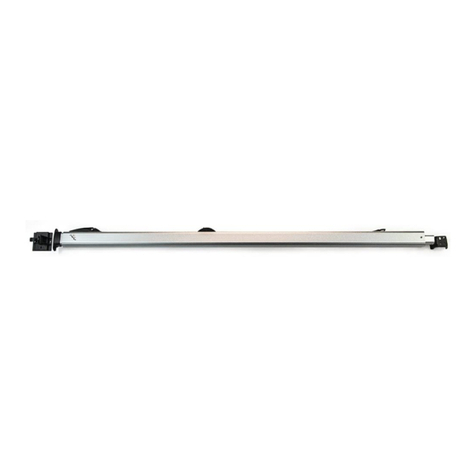
Carefree
Carefree FIESTA LITE Service manual
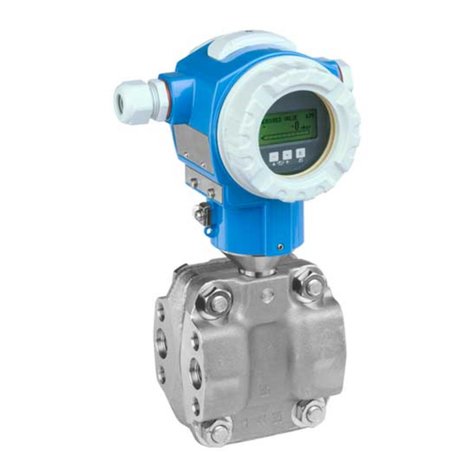
Endress+Hauser
Endress+Hauser Deltabar S PMD70 Exchange instruction

Garmin
Garmin GTM 10 - TMC Module Declaration of conformity
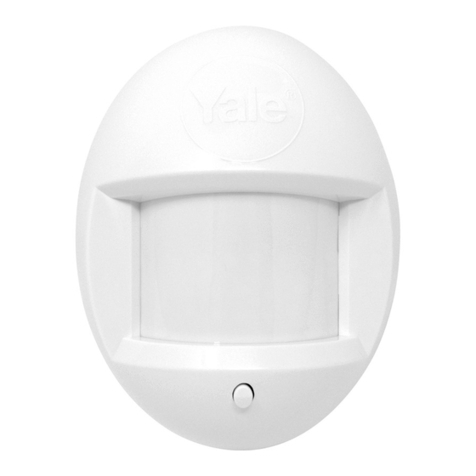
Assa Abloy
Assa Abloy Yale HSA6000 Series manual

TESA
TESA TESA-Rugosurf 20 instruction manual
